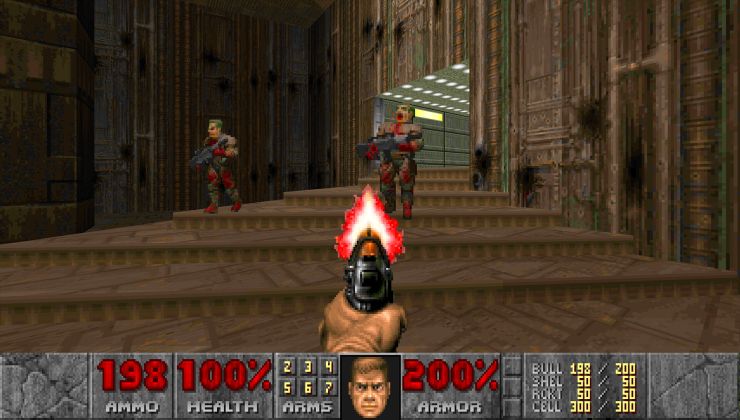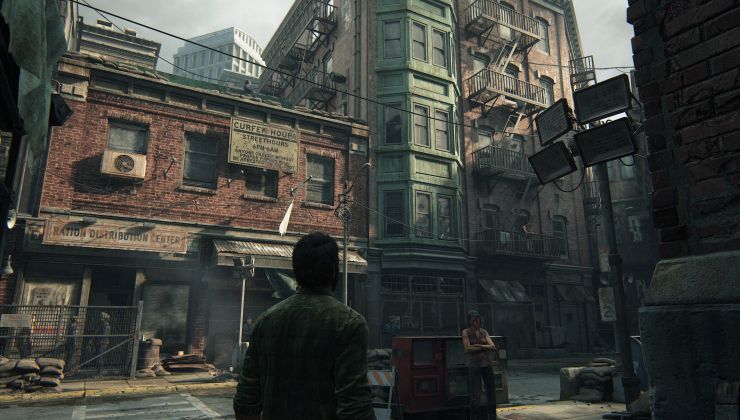Canonical has released the latest version of their Linux distribution Ubuntu with Ubuntu 22.10 "Kinetic Kudu".
This includes another 6 months of software improvements throughout the whole stack since the last release. This is not a LTS release though, with it only being supported for 9 months until July 2023. If you need to have a fully stable system that keeps being updated, stick with Ubuntu 22.04.
Some of the big new features includes:
- Linux kernel 5.19, which supports the new futex_waitv that can help gaming along with lots of new hardware support.
- PipeWire for audio by default.
- Default image apps now support the .webp format.
- GNOME 43.
- Various improvements for Raspberry Pi users.
- Plus all the usual updates to various included software.
- Ubuntu Unity is now an official supported flavour.
For a video overview, our friends at OMG Ubuntu gave it a fresh look:

Direct Link
In a blog post, Canonical also detailed more info about their Snap package of Steam. They noted it has seen "more than 75 thousand downloads", so it's clearly a lot more popular than comments across various places would make you believe. Sounds like they're doing better on getting driver updates out faster too.
Maybe I'll try Ubuntu again in the next LTS
I checked live version and compared fonts rendering on both Ubuntu 22.10 and Fedora 37 with Gnome Text Editor. In Ubuntu 22.10 fonts looks great, all is sharp, but on Fedora 37 fonts are blurry. Both OSes use Gnome 43 and GTK4 for Gnome Text Editor. Do you know what make a differences? I tested a lot of the same fonts on both OSes. Only monospace regular looks decent on Fedora 37. Second things, libadwaita apps works properly with Ubuntu color accents. DO you know how to achieve sharp fonts rendering and accent colors in libadwaita apps on Fedora 37?
Apparently Fedora uses the grayscale font antialiasing method by default. Most other distributions tend to go for subpixel rendering instead. I haven't touched Gnome in a decade, but a quick search suggests you should be able to find the relevant settings in Tweaks -> Fonts -> Anti Aliasing. Might have to log back in for this to take effect in apps.
Seems like the rationale for going for grayscale instead of subpixel is that the former looks nicer on high DPI screens.
Last edited by tuubi on 21 Oct 2022 at 4:05 pm UTC
firefox improved a lot the startup time on snap and it's performing better in benchmarks than non-snap version.
So, the official snapped Firefox now works better than the old fashion one. How things change. And what negativity Canonical got from small but feisty band for this work in progress
Looks like Steam snap is coming together nicely already too: https://ubuntu.com/blog/what-the-steam-snap-is-evolving
"By packaging Steam as a snap we’ve ensured that all of the dependencies required for gaming are included in the application. This means no messing around adding and maintaining PPAs and no issues with 32-bit libraries. Everything you need is included and isolated from the rest of your OS, regardless of the distro you’re running."
Apparently Fedora uses the grayscale font antialiasing method by default. Most other distributions tend to go for subpixel rendering instead. I haven't touched Gnome in a decade, but a quick search suggests you should be able to find the relevant settings in Tweaks -> Fonts -> Anti Aliasing. Might have to log back in for this to take effect in apps.I used the same settings via gnome tweaks for both OSes, so it must be something else.
Seems like the rationale for going for grayscale instead of subpixel is that the former looks nicer on high DPI screens.
firefox improved a lot the startup time on snap and it's performing better in benchmarks than non-snap version.
So, the official snapped Firefox now works better than the old fashion one. How things change. And what negativity Canonical got from small but feisty band for this work in progress
I think most of the shit Canonical got was due to them literally trying to force you to use the snap, if you wanted to or not. Not because it shipped as a snap, which of course is up to them, but you couldn’t even uninstall it and sudo apt install “normal” Firefox, since *buntu was set up to install the Snap version even if you did the command to install apt/deb version. That, I think, was a mistake on their part, to think would go over well with people.
That’s some Microsoft level asshattery. “We know you tried to install Firefox, but we installed Edgeium instead.”
firefox improved a lot the startup time on snap and it's performing better in benchmarks than non-snap version.
So, the official snapped Firefox now works better than the old fashion one. How things change. And what negativity Canonical got from small but feisty band for this work in progress
I think most of the shit Canonical got was due to them literally trying to force you to use the snap, if you wanted to or not. Not because it shipped as a snap, which of course is up to them, but you couldn’t even uninstall it and sudo apt install “normal” Firefox, since *buntu was set up to install the Snap version even if you did the command to install apt/deb version. That, I think, was a mistake on their part, to think would go over well with people.
That’s some Microsoft level asshattery. “We know you tried to install Firefox, but we installed Edgeium instead.”
Yes, exactly this. I’m using Ubuntu (LTS) on my machine at work. I really like the OS, snap is unfortunately the exception to it. Not so much that they have included and pre installed snap. While I would have preferred flatpak, I think snap is fine and valid for things like discord, Spotify of even Steam. But pushing snap into apt and running the snap installer while pretending apt is still very misleading and has a bad taste to it.
I think most of the shit Canonical got was due to them literally trying to force you to use the snap, if you wanted to or not. Not because it shipped as a snap, which of course is up to them, but you couldn’t even uninstall it and sudo apt install “normal” Firefox, since *buntu was set up to install the Snap version even if you did the command to install apt/deb version. That, I think, was a mistake on their part, to think would go over well with people.
That’s some Microsoft level asshattery. “We know you tried to install Firefox, but we installed Edgeium instead.”
That can't be right because you could uninstall anything. They forced or tried to force? No, the choice is yours and you can remove anything you like if you're not into the way Ubuntu has chosen to go ahead. See, there really is also the bigger picture for Canonical as service providers.
Canonical supports Ubuntu LTS releases for 10 years. It takes a huge amount of effort to build the latest Firefox (or Chromium) on ancient distros and Canonical didn't want to do that any more.
Users of old Ubuntu releases will get new browser updates (including security fixes) faster than with the traditional .deb update system.
Also, there are people who keep using Ubuntu after it has reached EOL. They won't get any security updates except from snaps because snaps still work.
The firefox.deb in Ubuntu 22.04 LTS does more than just install the Snap. It also provides integration for bug reporting and for allowing the Snap to be set as the default browser.
I think most of the shit Canonical got was due to them literally trying to force you to use the snap, if you wanted to or not. Not because it shipped as a snap, which of course is up to them, but you couldn’t even uninstall it and sudo apt install “normal” Firefox, since *buntu was set up to install the Snap version even if you did the command to install apt/deb version. That, I think, was a mistake on their part, to think would go over well with people.Which alternative method to you propose to get those users upgrading from a prior release (where the package existed) onto the snap (which is supported) rather than the package (which no longer exists)? Note that your chosen method will need to both be seamless for users and reduce the maintenance burden for the Ubuntu devs.
I dunno. How do you normally install snaps on the command line? If there's no method, that's a problem for snap, but I'm sure there is one. So if you wanted the snap, you'd use that, no?I think most of the shit Canonical got was due to them literally trying to force you to use the snap, if you wanted to or not. Not because it shipped as a snap, which of course is up to them, but you couldn’t even uninstall it and sudo apt install “normal” Firefox, since *buntu was set up to install the Snap version even if you did the command to install apt/deb version. That, I think, was a mistake on their part, to think would go over well with people.Which alternative method to you propose to get those users upgrading from a prior release (where the package existed) onto the snap (which is supported) rather than the package (which no longer exists)? Note that your chosen method will need to both be seamless for users and reduce the maintenance burden for the Ubuntu devs.
I mean, the question you're asking is two questions really--a command line question and a normal users-upgrading question. Presumably Ubuntu has a GUI software installer. So fine, if their new package is a snap, the GUI can install that and uninstall the .deb. On the other hand, if someone is using the command line, on a distribution that favour snaps but also uses debs, then I think it's fair to expect them to use apt to uninstall the old thing and snap to install the new thing if they want the snap.
And as to the package not existing any more . . . Ubuntu is Debian based. The package still exists, they're just choosing not to make it available to you.
firefox improved a lot the startup time on snap and it's performing better in benchmarks than non-snap version.
So, the official snapped Firefox now works better than the old fashion one. How things change. And what negativity Canonical got from small but feisty band for this work in progress
I think most of the shit Canonical got was due to them literally trying to force you to use the snap, if you wanted to or not. Not because it shipped as a snap, which of course is up to them, but you couldn’t even uninstall it and sudo apt install “normal” Firefox, since *buntu was set up to install the Snap version even if you did the command to install apt/deb version. That, I think, was a mistake on their part, to think would go over well with people.
That’s some Microsoft level asshattery. “We know you tried to install Firefox, but we installed Edgeium instead.”
Are you telling me you can't purge that crap and mask it? I mean i'm totally fine building firefox from source, but if the system is coming out of the image with snap installed, configured, and its removal causing overall woes, i might reconsider my choices. Life is too short to fiddle with all the buzzwords that appear and fade away every N years.













 How to set, change and reset your SteamOS / Steam Deck desktop sudo password
How to set, change and reset your SteamOS / Steam Deck desktop sudo password How to set up Decky Loader on Steam Deck / SteamOS for easy plugins
How to set up Decky Loader on Steam Deck / SteamOS for easy plugins
See more from me